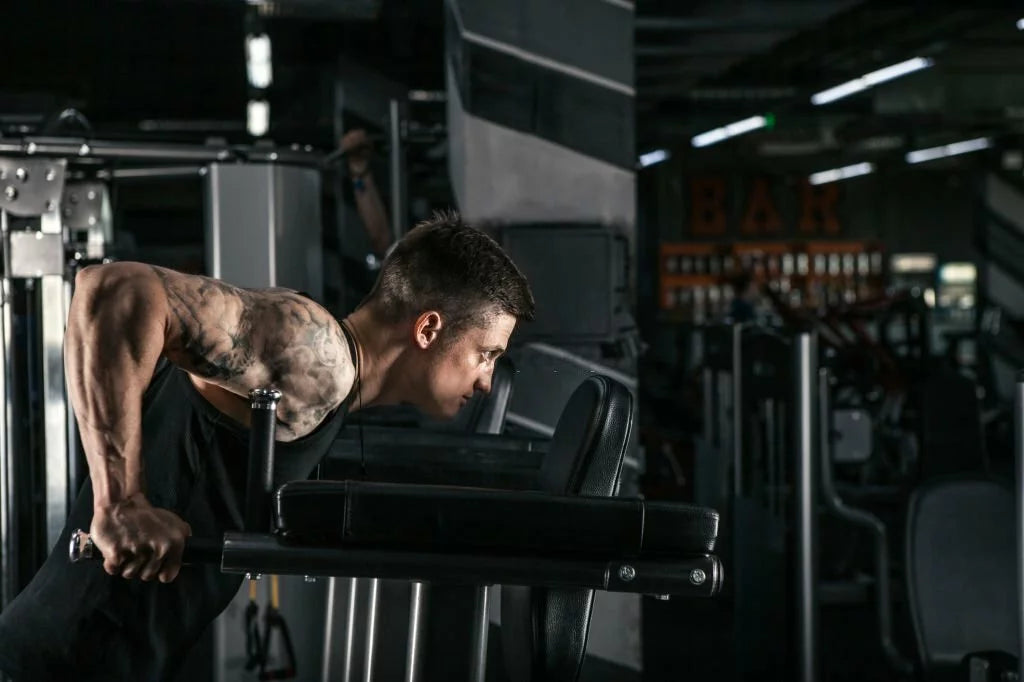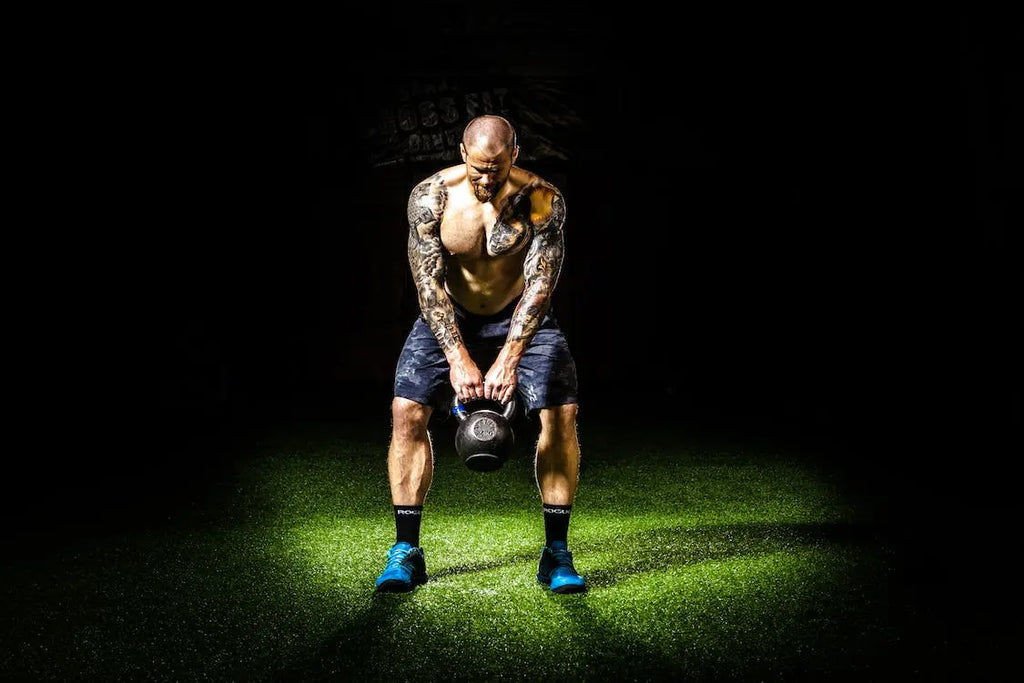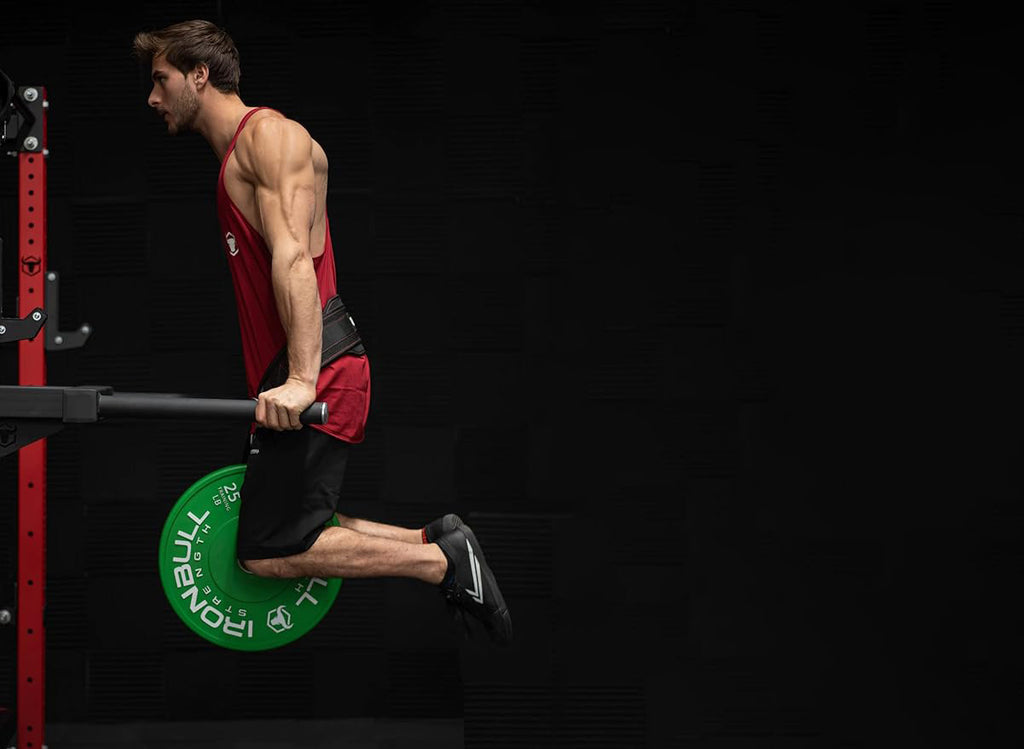Chest Dips: Proper Form, Technique & Benefits


Chest dips, a pivotal exercise in the realm of upper body strength training, stand out for their unmatched efficacy in enhancing muscle development and functional strength. As a compound movement, they engage a broad spectrum of muscle groups, making them a staple in routines aimed at sculpting a powerful and well-defined upper body. Essential for both novice and seasoned athletes, chest dips excel in their versatility and adaptability to various fitness levels. Whether performed using parallel bars in a gym setting or with modified setups at home, they remain accessible and effective for everyone.
This exercise not only fortifies the pectoral muscles, triceps, and deltoids but also plays a significant role in improving overall upper body endurance and stability. Incorporating chest dips into your workout regime promises not just aesthetic gains but also substantial improvements in functional fitness, making them a cornerstone among upper body strength exercises. As we delve deeper into this guide, we will explore the various facets of chest dips, including their technique, benefits, innovative variations, and crucial safety tips to enhance your strength training journey.
How to Perform the Chest Dip
Start Position: Grip and Stance
The journey into mastering chest dips begins with the correct start position. Stand between the parallel bars and grasp each one firmly with your hands positioned shoulder-width apart. Ensure your arms are straight, locking your elbows to establish a stable base. Adopt a stance where your feet are together, slightly crossed at the ankles. This position not only helps in maintaining a streamlined form but also aids in engaging the core, setting the foundation for an effective dip.
Descending: Movement and Depth
The descending phase is critical for targeting the right muscle groups. From your starting position, initiate the descent by bending your elbows while keeping them close to your body. Lean forward slightly to engage the chest muscles more effectively. Lower yourself steadily until your elbows form a 90-degree angle, ensuring that your shoulders do not drop below your elbows to avoid unnecessary strain. This depth is essential for maximizing engagement in the chest and arm muscles.
Ascending: Pushing Up and Form Maintenance
Once you reach the bottom of the dip, the ascending phase begins. Push up from your palms, focusing on driving your body upwards using your chest and arm muscles. It is crucial to maintain your forward lean and keep your elbows close to your body throughout this movement. Avoid locking your elbows at the top; instead, stop just short of the full extension to keep constant tension on the muscles.
Finishing: Exiting the Dip Safely
To safely exit the dip, push up to return to your initial starting position with your arms fully extended. Ensure that your last repetition is as controlled and steady as your first. This not only helps in preventing any potential strain or injury but also reinforces good form and technique, which are key to effective chest dip workouts.
Muscles Worked During the Chest Dip
Pectoralis Major: Chest Muscle Engagement
The chest dip primarily targets the pectoralis major, the large fan-shaped muscle spanning across the chest. This muscle plays a pivotal role in the dipping motion, especially during the descending phase. As you lower your body, the pectoralis major engages to control the movement, and during the ascent, it works to lift your body back to the starting position. This consistent engagement throughout the exercise helps in developing chest strength and size, contributing to a more robust upper body profile.
Triceps Brachii: Arm Muscle Involvement
Triceps brachii, located at the back of the upper arms, are crucial for the extension of the elbows during chest dips. These muscles become particularly active during the ascending phase of the dip. When you push your body upwards, the triceps brachii contract, providing the necessary force to straighten the arms. Regular performance of chest dips can lead to significant triceps development, enhancing overall arm strength and definition.
Anterior Deltoids: Shoulder Muscle Activation
The anterior deltoids, or the front shoulder muscles, are also significantly worked during chest dips. They assist in lowering and lifting the body, especially as you move in and out of the deep position of the dip. The activation of these muscles not only aids in performing the exercise but also contributes to balanced shoulder development, an important aspect for preventing injuries and ensuring overall shoulder health.
Core Muscles: Stabilization and Support
Often overlooked, the core muscles play a vital role in the chest dip. Engaging the core is essential for maintaining proper posture and balance throughout the exercise. The core muscles, including the abs and lower back, stabilize the torso, preventing unnecessary swinging or swaying. This stabilization is key for focusing the effort on the upper body muscles and ensuring a safe and effective workout.
Benefits of the Chest Dip
Upper Body Strength Enhancement
Chest dips are immensely effective in enhancing upper body strength, a fundamental goal for many fitness enthusiasts. By engaging multiple muscle groups simultaneously, including the chest, arms, and shoulders, this exercise provides a comprehensive strength-building workout. Regular practice of chest dips results in improved push strength, essential for various physical activities and other exercises. The intensity of working against one's body weight also contributes to increased muscle endurance, essential for overall upper body resilience.
Improved Muscle Coordination and Stability
One of the less discussed but equally important benefits of chest dips is the improvement in muscle coordination and stability. As a compound exercise, it requires simultaneous engagement of various muscle groups, fostering better intermuscular communication. This coordination is crucial for the execution of complex movements and contributes significantly to overall body control and stability, both in daily activities and athletic performance.
Functional Strength and Endurance
Chest dips excel in building functional strength and endurance. Functional strength refers to the ability to perform everyday and sport-specific activities with ease. By replicating movement patterns used in daily life, chest dips enhance one's ability to push, lift, and bear weight, making everyday tasks easier and improving athletic prowess. Additionally, as endurance is built through repeated and sustained effort in chest dips, one's capacity to perform other endurance-based activities increases.
Versatility in Bodyweight Training
The versatility of chest dips makes them a standout choice in bodyweight training. They can be easily modified to suit various fitness levels and goals, from beginners using assistance to advanced athletes adding extra weight. This adaptability ensures that chest dips remain a relevant and challenging part of any workout regimen, regardless of one's fitness journey stage. Furthermore, their ability to be performed with minimal equipment, from gym setups to improvised home environments, makes chest dips a universally accessible exercise for enhancing upper body strength.
[Related: 5 Reasons Why You Should Be Doing Dips]
Chest Dip Variations
Assisted Chest Dip: For Beginners
Assisted chest dips are an excellent starting point for those new to this exercise. By using an assisted dip machine or resistance bands, beginners can perform the movement with a portion of their body weight supported. This assistance helps in maintaining proper form while building the necessary strength and endurance to progress to unassisted dips. Assisted dips are also beneficial for those recovering from injuries or dealing with strength limitations, allowing them to engage in this effective exercise without the risk of strain.
Weighted Chest Dip: For Advanced Lifters
For those who have mastered the standard chest dip and seek further challenge, weighted dips offer an effective progression. By adding extra weight through a dip belt, weighted vest, or even a dumbbell held between the feet, the intensity of the exercise significantly increases. This additional load places greater stress on the muscles, leading to increased strength gains and muscle hypertrophy. Weighted chest dips are ideal for advanced lifters looking to push their limits and add variety to their strength training routines.
Ring Dips: Increased Stability Challenge
Ring dips, performed on gymnastic rings, introduce an element of instability to the exercise. This instability requires the lifter to engage additional stabilizer muscles, particularly in the shoulders and core, to maintain proper form. The increased demand for balance and control makes ring dips a more challenging and beneficial variation, improving overall body control and functional strength.
Korean Dips: Unique Angle and Intensity
Korean dips are a less common but highly effective variation. Performed on a straight bar or parallel bars, the lifter leans forward significantly, placing more emphasis on the lower chest and triceps. This variation alters the angle and intensity of the exercise, offering a unique challenge and targeting the muscles differently compared to standard chest dips. Korean dips are ideal for experienced lifters seeking to diversify their dip routine and target their muscles from new angles.
What to Avoid When Performing Chest Dips
Avoiding Elbow Flaring: Protecting the Joints
A common mistake during chest dips is flaring the elbows outwards, which can put excessive strain on the shoulder joints and lead to potential injuries. It's crucial to keep your elbows aligned with your body, not allowing them to splay out to the sides. This alignment ensures that the strain is evenly distributed across the chest and arm muscles, safeguarding the shoulder joints from undue stress.
Avoiding Partial Range of Motion: Maximizing Effectiveness
Many individuals perform chest dips without going through the full range of motion, either descending too shallowly or not extending fully at the top. This partial movement limits the effectiveness of the exercise, reducing muscle engagement and growth. Ensure you lower your body until your elbows are at a 90-degree angle and ascend until your arms are almost straight for maximum muscle activation and development.
Avoiding Excessive Speed: Focus on Form
Executing chest dips with excessive speed is another common error. Rapid movements can lead to a loss of control and reduced muscle engagement. Focus on performing each dip with controlled, deliberate movements, prioritizing form over speed to ensure safety and maximize the benefits of the exercise.
Avoiding Overtraining: Balance and Recovery
Incorporating chest dips too frequently without adequate recovery can lead to overtraining and fatigue, hindering muscle growth and performance. Balance your workout routine with proper rest periods, allowing your muscles to recover and grow stronger. Remember, quality and consistency are more effective than overexertion in strength training.
Final Notes
In conclusion, chest dips are a highly effective exercise for enhancing upper body strength, engaging key muscle groups like the pectoralis major, triceps, and anterior deltoids. This versatile exercise not only improves muscle coordination and stability but also offers the benefits of functional strength and endurance. With variations such as assisted dips for beginners and weighted dips for advanced lifters, chest dips can be adapted to suit different fitness levels. However, it's crucial to avoid common mistakes like elbow flaring, partial movements, excessive speed, and overtraining to ensure safety and effectiveness. Incorporating chest dips into your routine, with attention to form and technique, can significantly contribute to a stronger and more resilient upper body.











